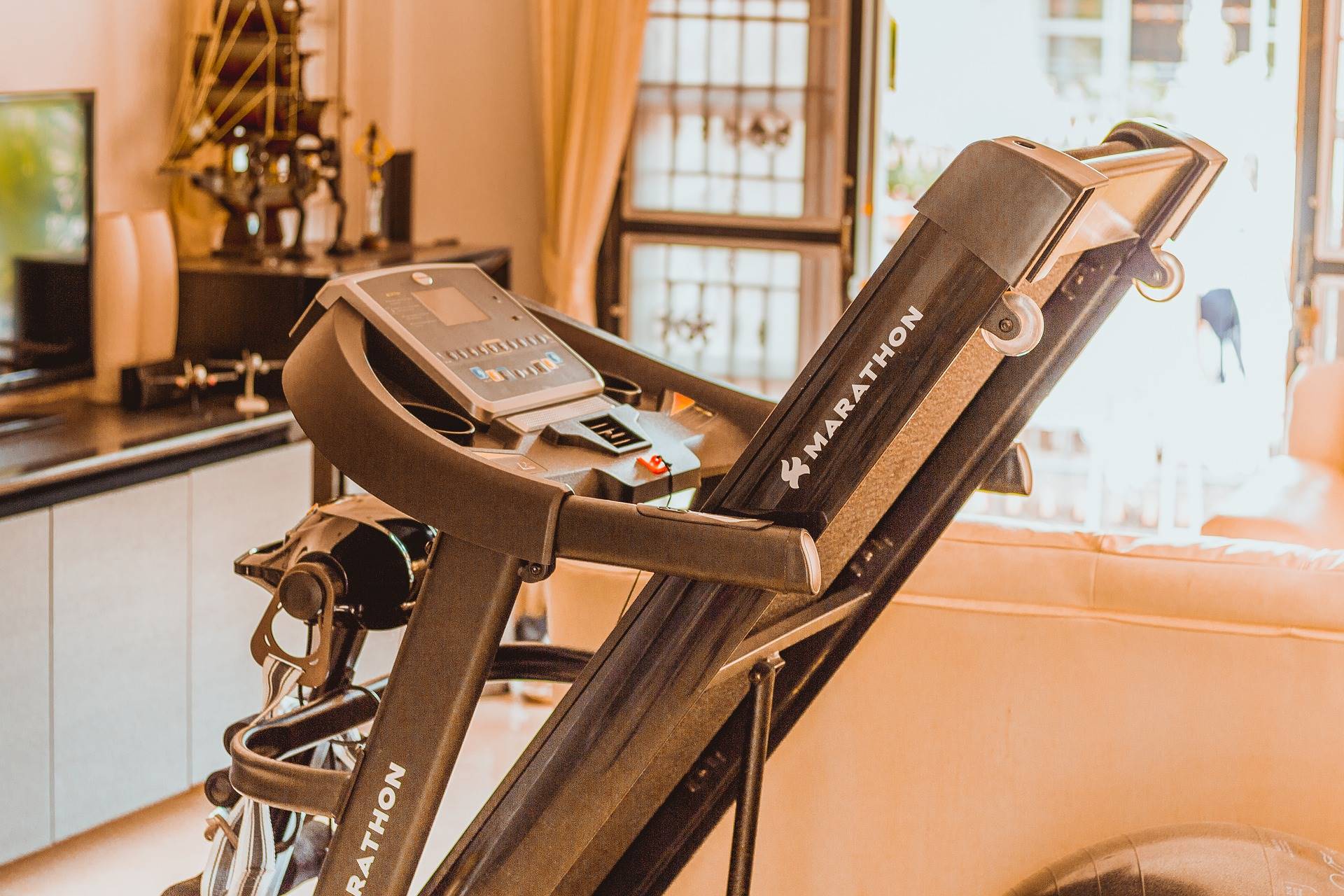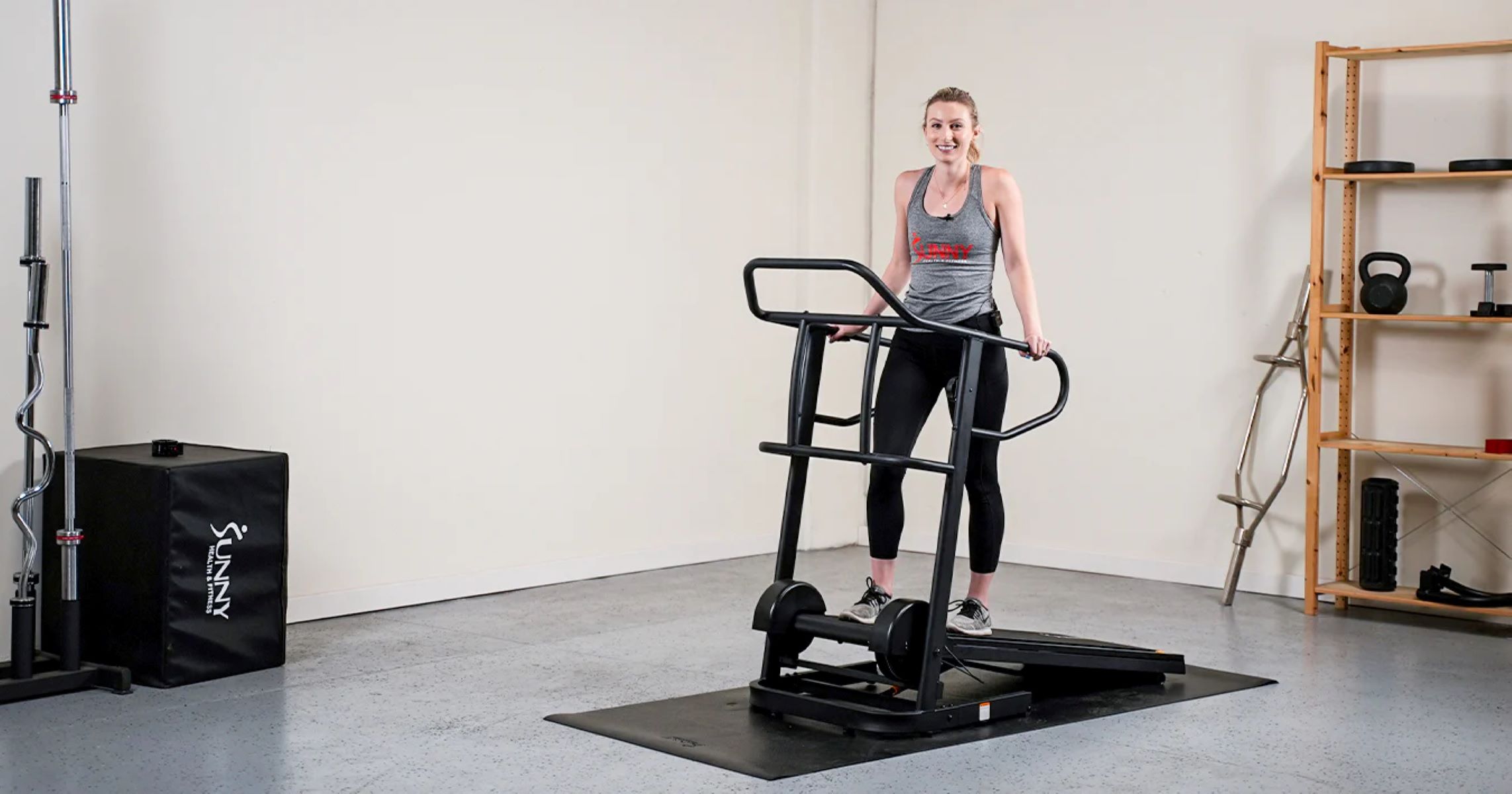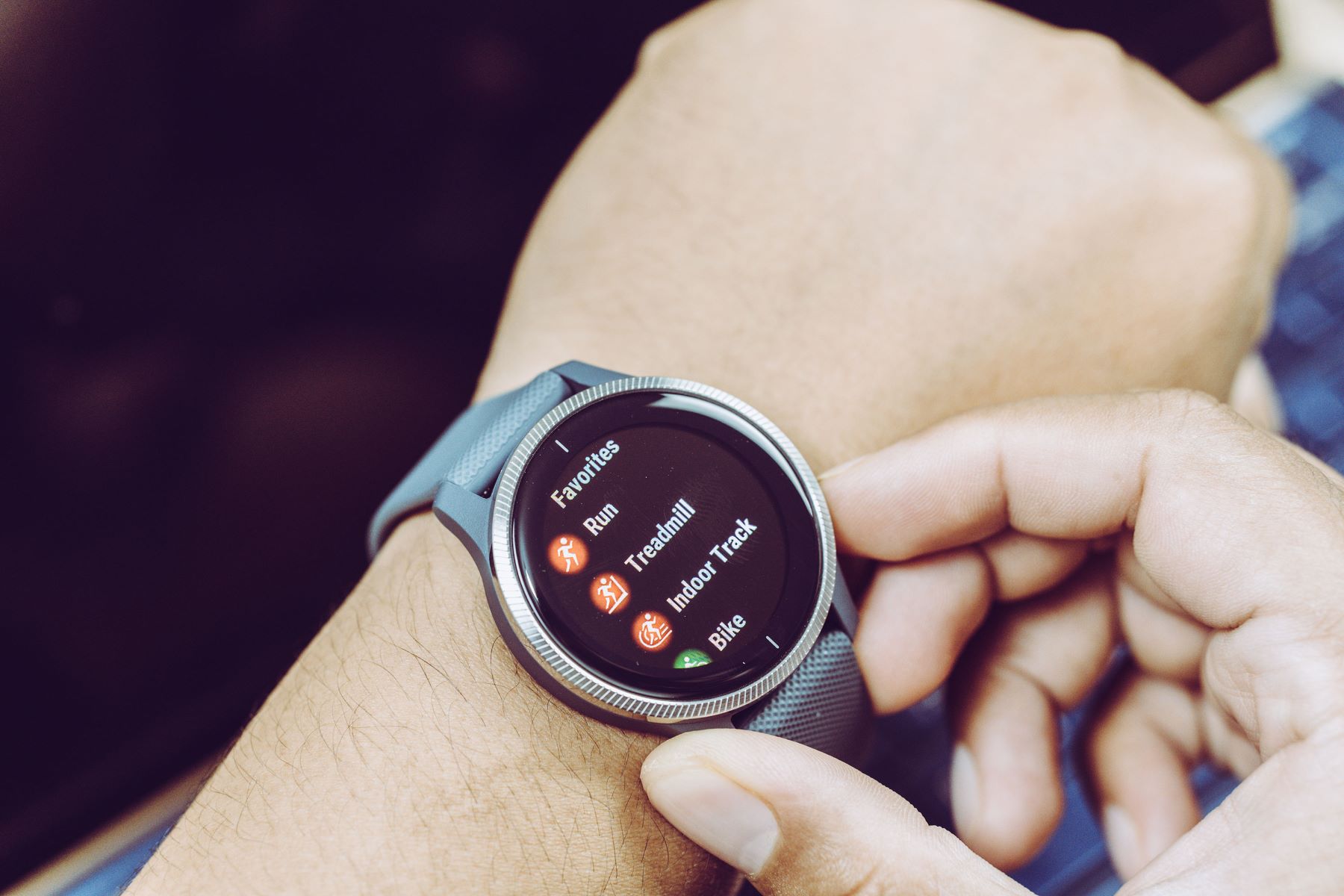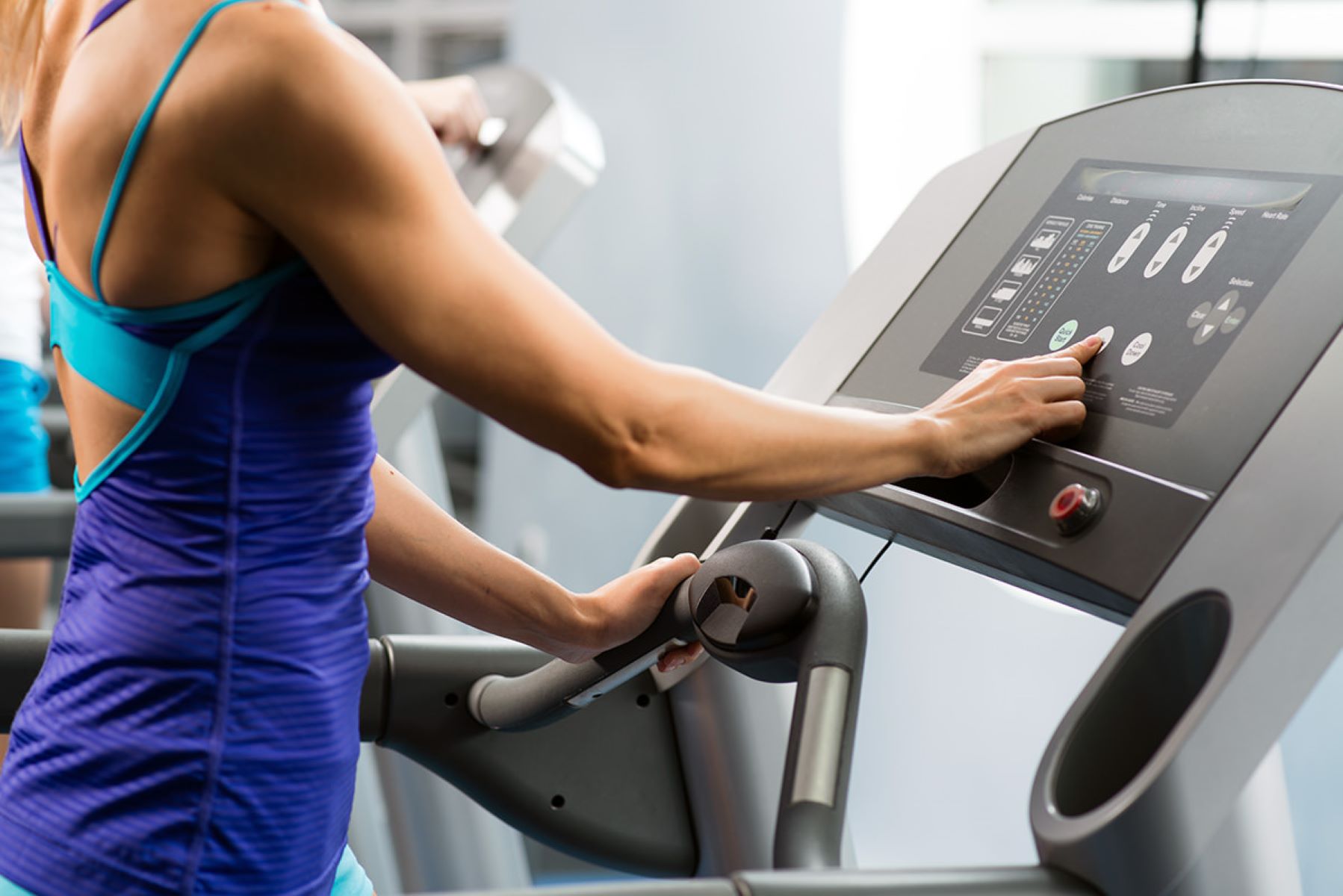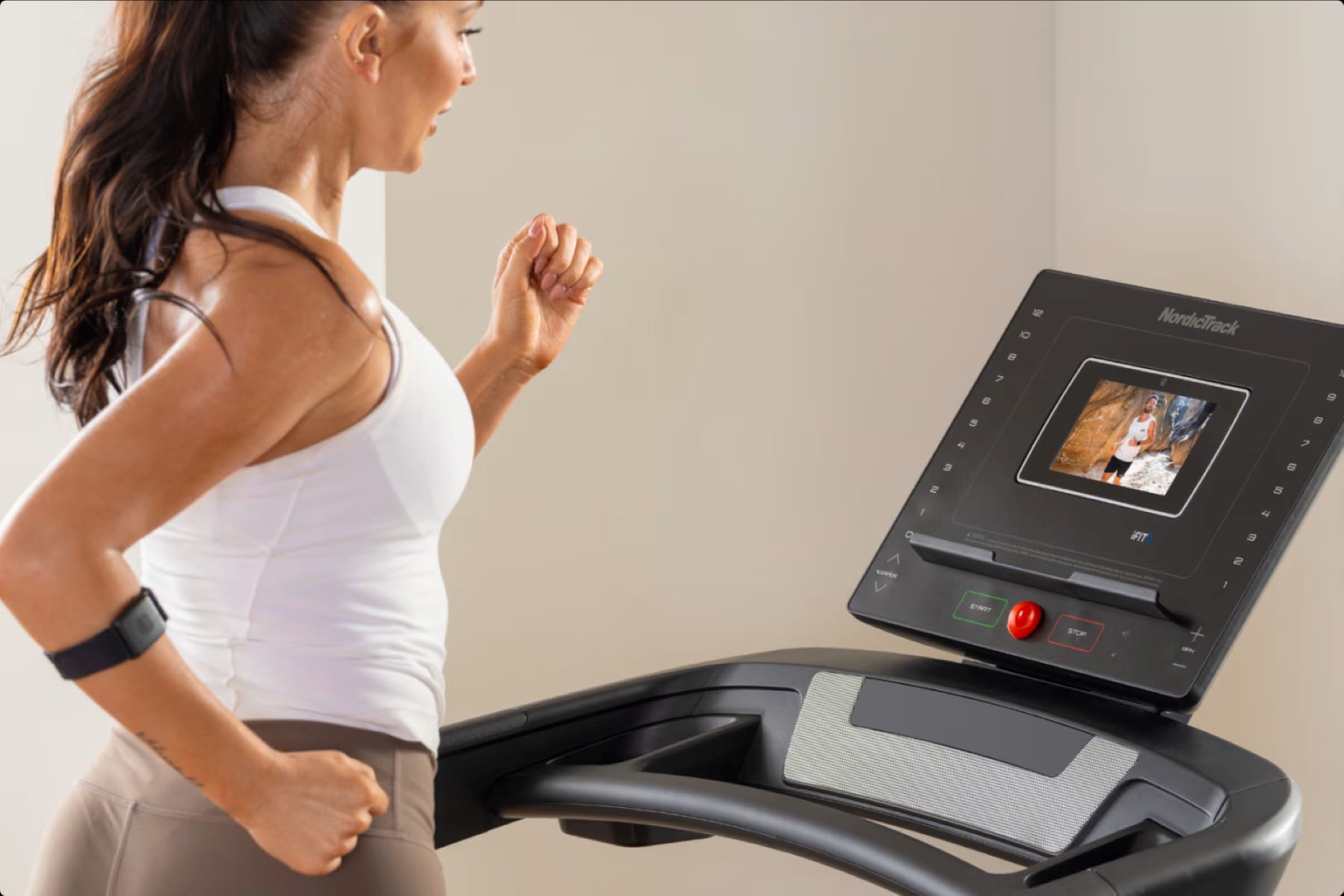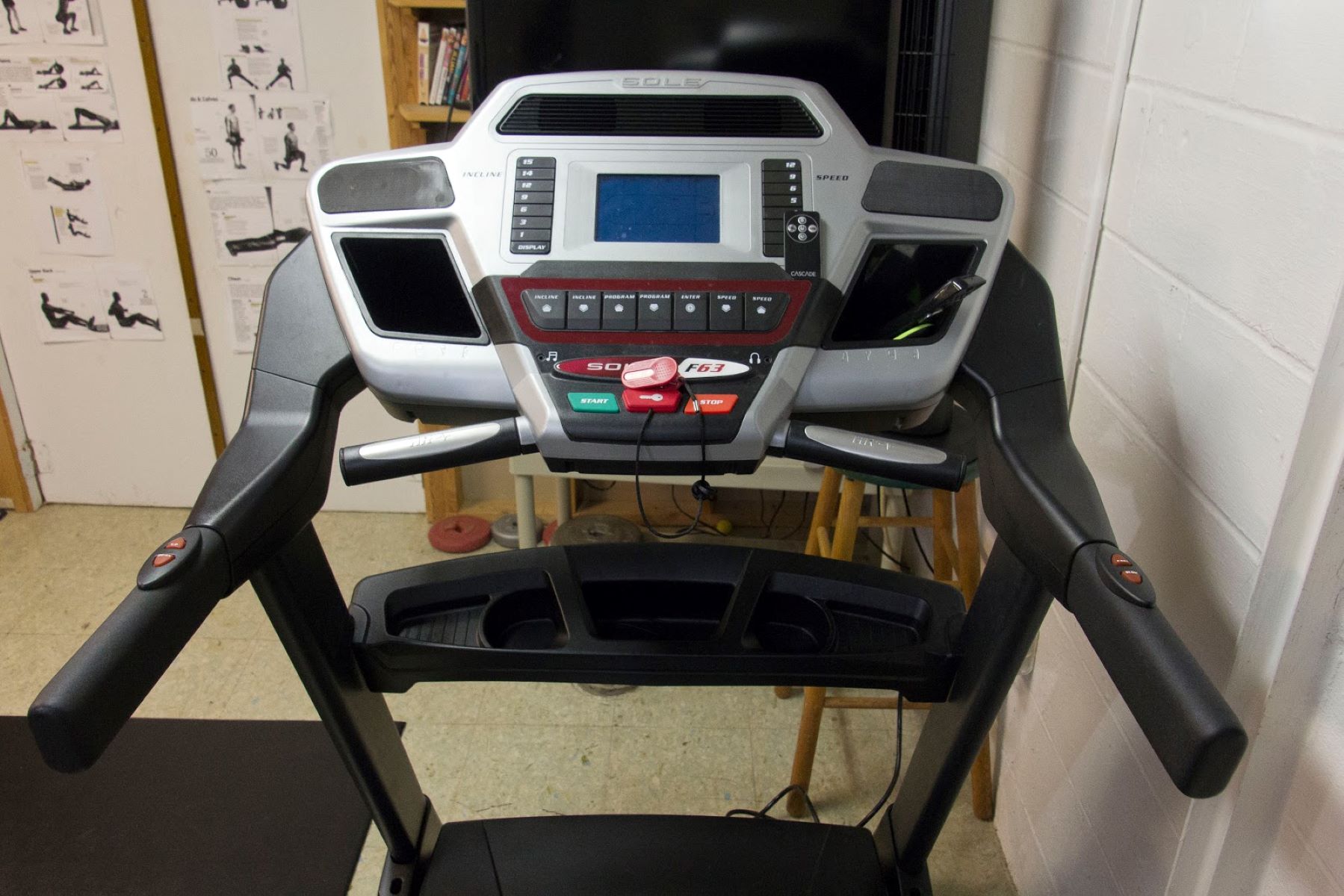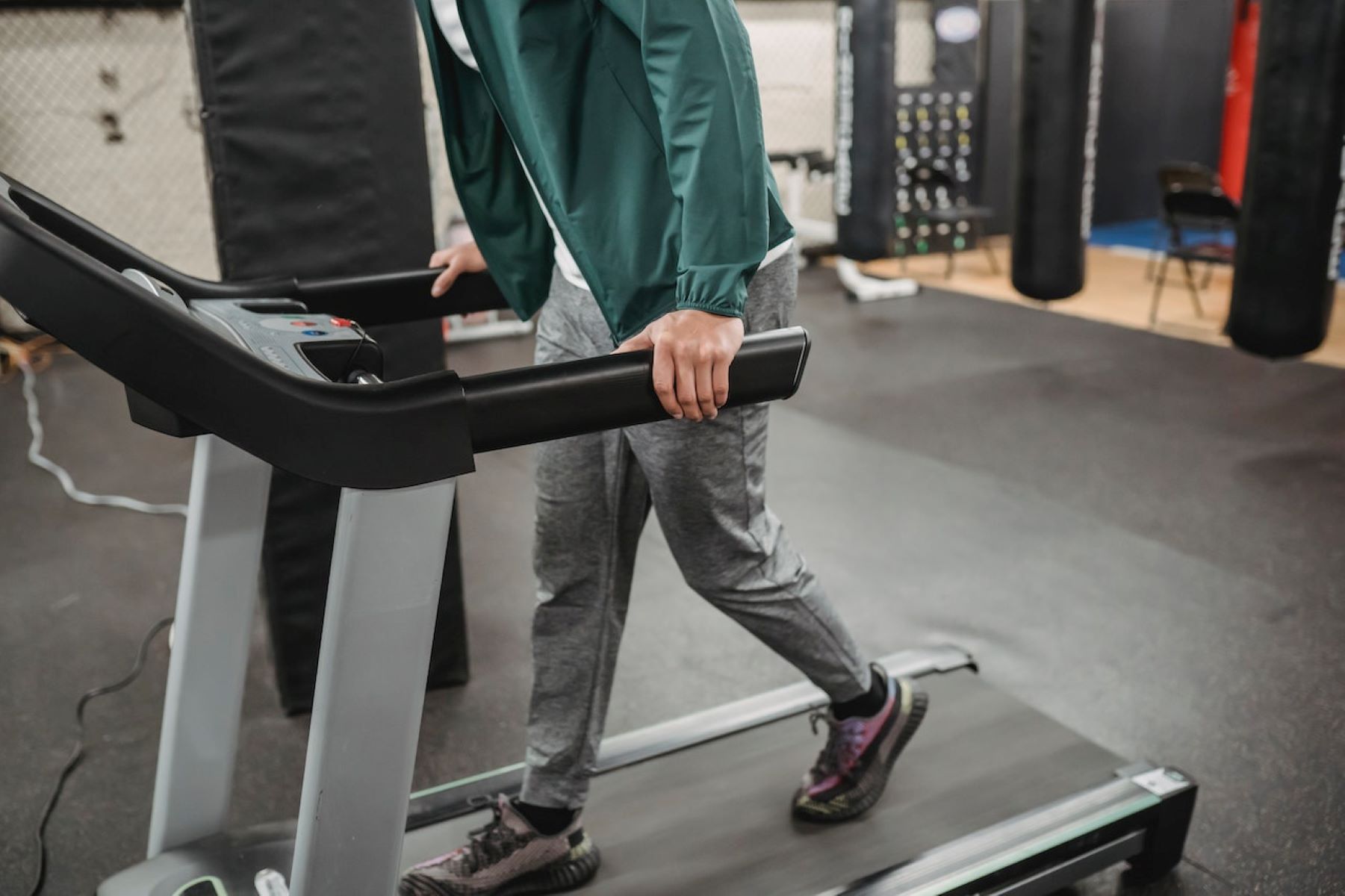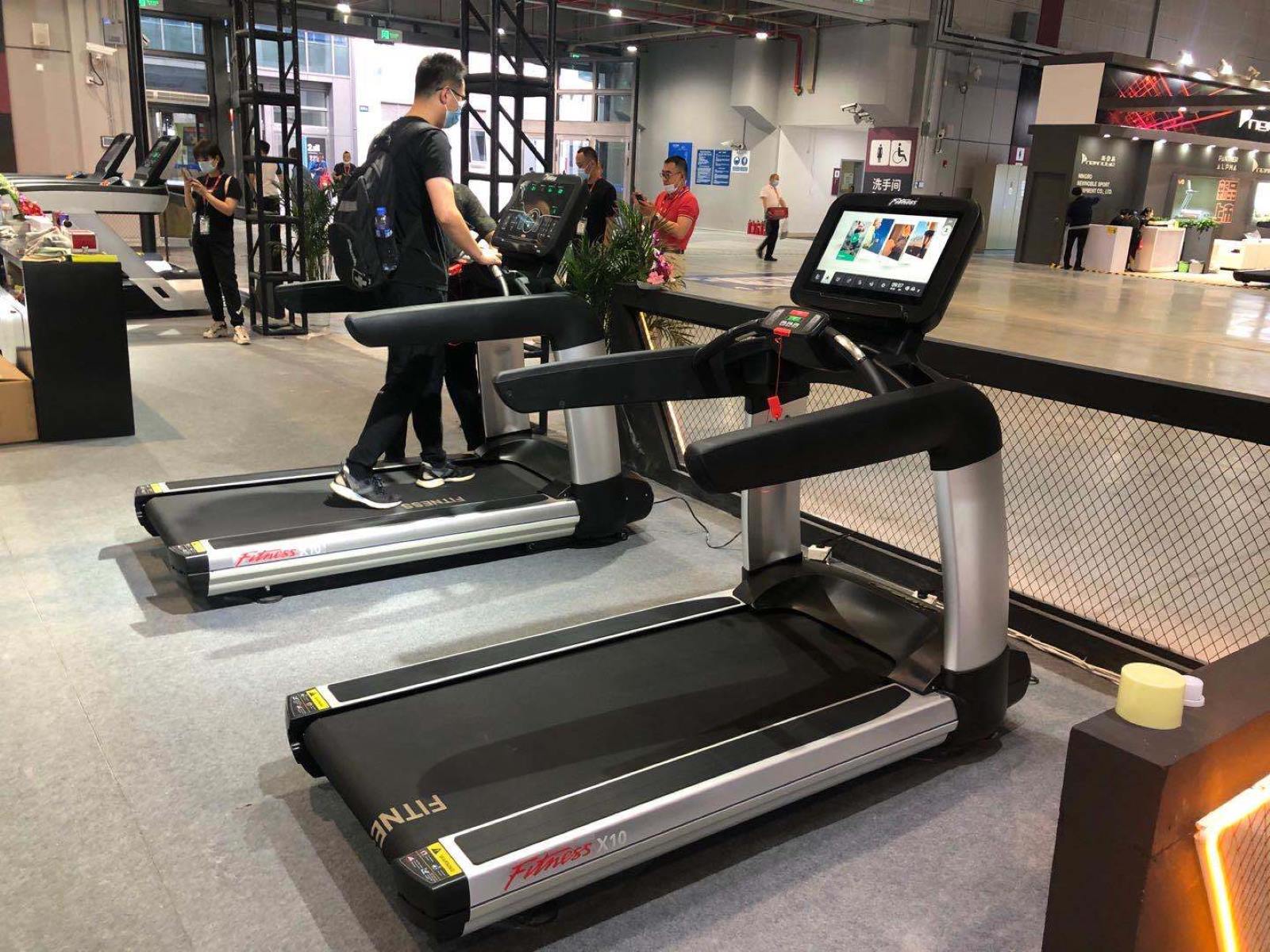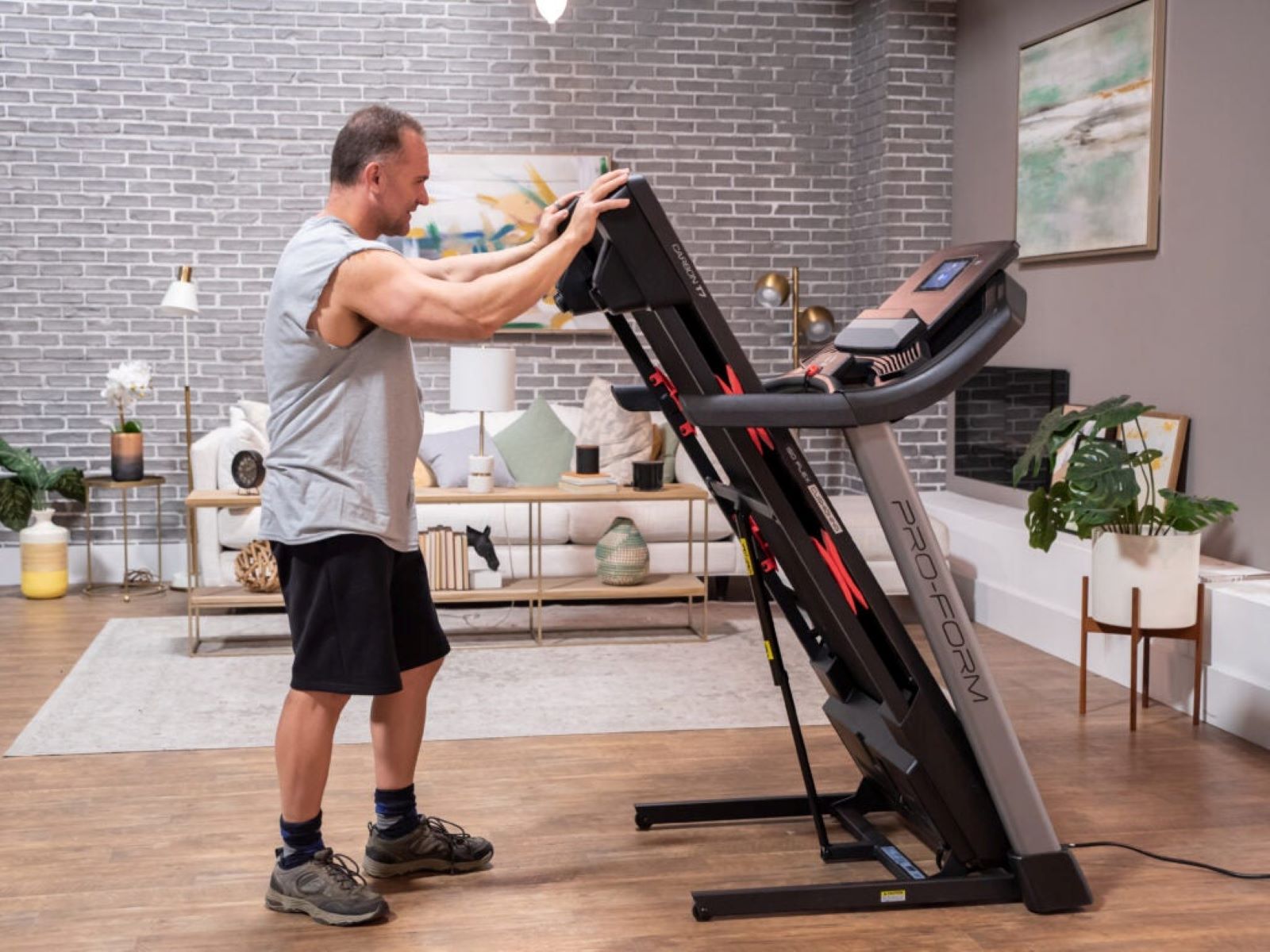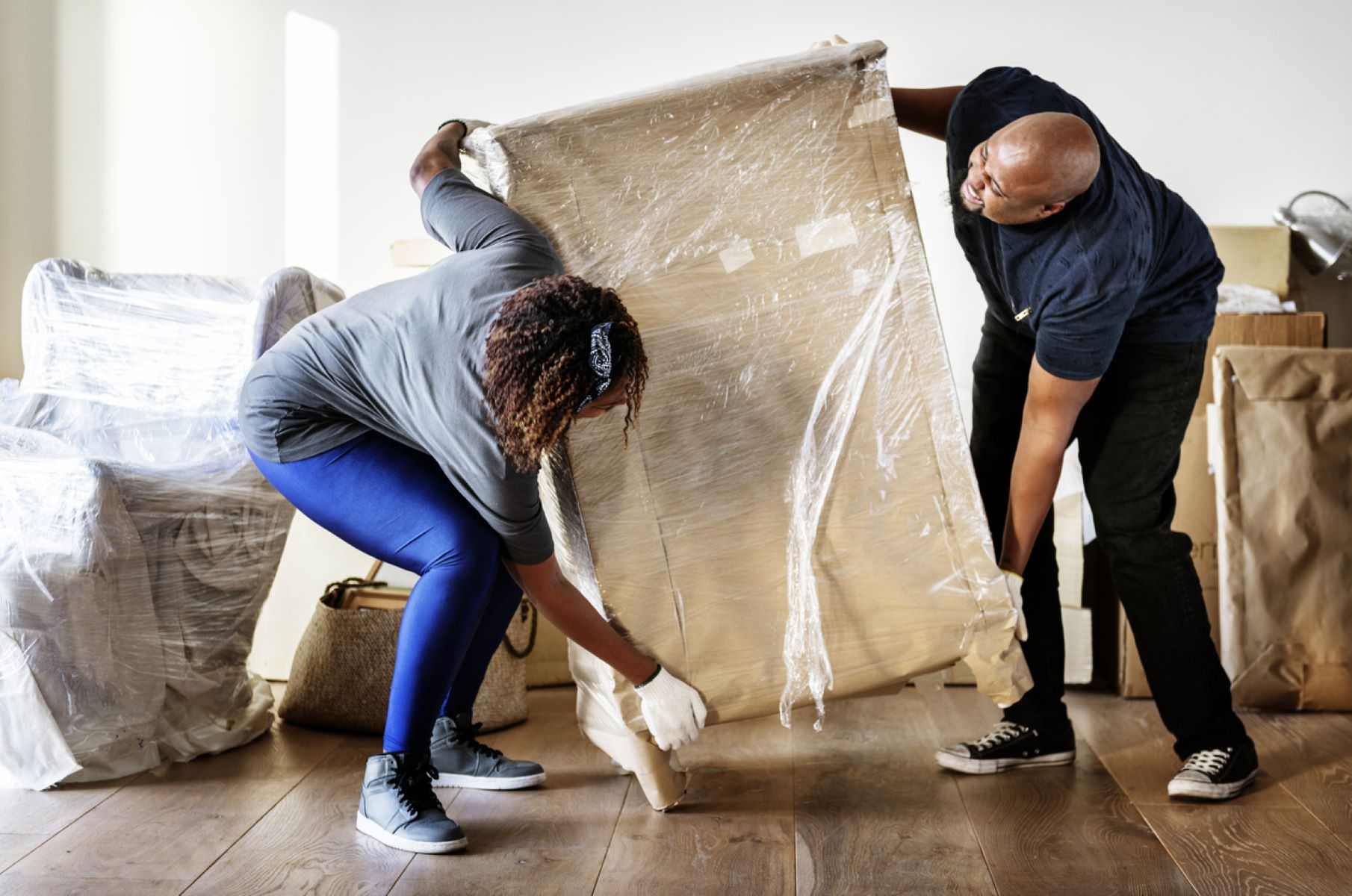

Featured
How To Move Treadmill Upstairs
Published: August 12, 2023
Discover the easy and safe way to move your treadmill upstairs with our featured guide. Follow our step-by-step instructions and avoid any accidents or damages.
Introduction
Moving a treadmill upstairs can be a daunting task, especially if you’re not prepared or unsure of the proper techniques. Whether you’re relocating to a new home, rearranging your workout space, or simply need to transport your treadmill to another level, it’s essential to have a plan in place to ensure a safe and efficient move.
In this article, we will guide you through the step-by-step process of moving a treadmill upstairs. We will cover everything from assessing the situation and gathering necessary equipment to disassembling, securing, and ultimately reassembling the treadmill. By following these guidelines, you can save yourself from potential injuries and successfully navigate the challenge of moving a heavy and bulky exercise equipment.
Before proceeding with the move, it’s important to note that the specific instructions may vary depending on the type and model of your treadmill. Always refer to your treadmill’s user manual for manufacturer recommendations or consult with a professional if necessary.
So, let’s dive in and learn how to safely move a treadmill upstairs and make your fitness equipment transition a smooth and stress-free process!
Assess the Situation
Before you begin the process of moving your treadmill upstairs, it’s essential to assess the situation and evaluate the logistics involved. Consider the following factors:
- Available Space: Measure the dimensions of the staircase, hallways, and door frames to ensure that the treadmill can fit through without any obstructions or tight squeezes. Take note of any sharp turns or narrow passages that might pose challenges during the move.
- Weight and Size: Determine the weight and dimensions of your treadmill. This information is crucial for planning the manpower and equipment needed for the job. Some treadmills can be quite heavy, so it’s important to properly distribute the weight when lifting and moving.
- Pathway: Identify the pathway you will take to move the treadmill upstairs. Clear any obstacles, such as furniture or rugs, that could impede the movement. Remove any fragile objects that could be damaged during the process.
- Teamwork: Assess whether you need assistance to move the treadmill. Depending on its size and weight, it may be challenging to handle alone. Enlist the help of a friend or family member to ensure a safer and more efficient move.
By carefully analyzing these factors, you can develop a plan that takes into account the specific challenges and requirements of moving your treadmill upstairs. This assessment will help you determine the resources, time, and effort needed to complete the task successfully.
Gather Necessary Equipment
Before you begin the process of moving your treadmill upstairs, it’s important to gather the necessary equipment to ensure a smooth and safe relocation. Here is a list of essential items you will need:
- Moving Straps or Belts: These straps are essential for safely lifting and carrying the treadmill. Look for sturdy, adjustable straps that can securely hold the weight of the equipment.
- Protective Padding: It is crucial to protect your treadmill from scratches or damages during the move. Use blankets, foam padding, or moving blankets to cover the treadmill’s surfaces and prevent any potential harm.
- Tools: Depending on the type of treadmill, you may need tools to disassemble and reassemble certain parts. Common tools include screwdrivers, wrenches, and Allen wrenches. Consult your treadmill’s user manual for specific tool requirements.
- Furniture Dolly or Hand Truck: A furniture dolly or hand truck can be beneficial for maneuvering the treadmill on flat surfaces like hallways or doorways. Ensure your chosen dolly has a weight capacity that can handle the treadmill’s weight.
- Moving Blankets or Cardboard: Use moving blankets or cardboard to protect the walls, corners, and floors from potential damage when moving the treadmill upstairs. This will help prevent scuffs or scratches along the way.
- Personal Protective Equipment: Safety should always be a priority. Wear gloves to protect your hands and closed-toe shoes to ensure stability and prevent foot injuries while lifting and moving the treadmill.
By having these essential items on hand, you will be well-prepared to handle the move efficiently and minimize the risk of damaging your treadmill or injuring yourself during the process. Make sure to gather all the necessary equipment in advance to avoid any delays or issues on moving day.
Prepare the Treadmill
Before you start disassembling the treadmill, it’s essential to properly prepare it for the move. Follow these steps to ensure your treadmill is ready:
- Unplug the Treadmill: Begin by disconnecting the treadmill from any power source. Unplug the power cord and ensure that it is secured and out of the way to avoid any tripping hazards during the move.
- Remove Accessories: Take off any accessories or attachments from the treadmill, such as water bottle holders, tablet holders, or safety keys. By removing these items, you reduce the risk of them getting damaged during the move.
- Lower the Incline: If your treadmill has an incline feature, lower it to its lowest setting. This will help reduce the overall height and make it easier to navigate through doorways and tight spaces.
- Secure Moving Parts: Use tape or Velcro straps to secure any moving parts, such as the treadmill’s arms or incline mechanism. This will prevent them from accidentally unfolding or swinging during the move.
- Document Assembly: Take pictures or make note of the treadmill’s current assembly. This will serve as a useful reference when reassembling the treadmill at its new location.
By taking the time to properly prepare your treadmill before the move, you can ensure that it is in the best condition for transportation. This step will help minimize the risk of damage and make the disassembly and reassembly processes smoother and more efficient.
Disassemble the Treadmill
Disassembling your treadmill is a crucial step in moving it upstairs. Follow these steps to dismantle your treadmill properly:
- Refer to the User Manual: Consult your treadmill’s user manual for specific instructions on how to disassemble it. The manual will provide detailed guidance tailored to your treadmill’s make and model.
- Start with the Accessories: Remove any accessories that are still attached to the treadmill, such as the console or safety key. Keep these parts in a safe place to avoid misplacing them during the move.
- Remove the Console: Unscrew or detach the console from the treadmill’s main body. Place it in a protective covering, such as a towel or bubble wrap, to prevent any potential damage during the move.
- Safely Disconnect Wires: Carefully disconnect any wires or cables that are connected to the treadmill’s motor or control panel. Take note of their placement and route for easier reassembly later.
- Detach the Handles or Arms: If your treadmill has handles or arms, detach them according to the instructions in the user manual. Secure them with tape or straps to prevent them from swinging or getting damaged during the move.
- Fold or Collapse the Deck: If possible, fold or collapse the treadmill’s deck to reduce the overall size and make it easier to transport. Follow the manufacturer’s instructions on how to properly fold or collapse the deck without causing any damage.
- Remove the Motor Cover: If your treadmill has a removable motor cover, unscrew or unclip it to access the motor. Take extra care not to damage any internal components while removing the cover.
By following these steps and referencing your treadmill’s user manual, you can safely disassemble the necessary parts of your treadmill, making it more manageable to move upstairs. Remember to keep all the disassembled parts organized and well-protected during the move to ensure a successful reassembly process.
Secure the Parts
Once you have disassembled the necessary components of your treadmill, it’s crucial to secure and protect the parts for the move. Follow these steps to ensure the safe transportation of the treadmill parts:
- Label and Organize: Use labels or markers to clearly identify and organize the different parts of the treadmill. This will make it easier when it comes time to reassemble the treadmill at its new location.
- Use Secure Packaging: Wrap each disassembled part in protective material, such as bubble wrap or moving blankets. This will prevent any potential damage or scratches during transport.
- Secure Small Parts: Place any small screws, bolts, or other small parts in a plastic bag or container. Make sure to label the bag or container to indicate which part they belong to.
- Keep Parts Together: Group the wrapped parts together and secure them with tape or zip ties. Keeping all the components together will make it easier to find and assemble them later.
- Protect Fragile Parts: If there are any fragile or delicate parts, such as the console or display panel, provide extra padding and protection to ensure their safe transport.
- Store Manuals and Tools: Keep the treadmill’s user manual and any necessary tools, such as Allen wrenches or screwdrivers, with the disassembled parts. This way, everything you need for reassembly will be easily accessible.
- Transport with Care: When moving the disassembled parts, handle them with care and avoid any rough tossing or jostling. Place them in a secure, designated area in your vehicle to prevent shifting or damage during transportation.
By securely packaging and organizing the disassembled parts, you will ensure their safe arrival at the new location. Taking the time to protect and label each part will make the reassembly process much smoother and efficient.
Aiding the Move
Moving a treadmill upstairs requires careful planning and strategic assistance to ensure a smooth and safe transition. Here are some tips to aid you during the move:
- Use Furniture Sliders: If your treadmill is on a carpeted surface, place furniture sliders underneath the base to reduce friction. This will make it easier to maneuver the treadmill through the carpeted areas.
- Clear the Pathway: Remove any obstacles along the pathway, such as furniture, rugs, or other items. Clearing the way will make it much easier to navigate the treadmill through tight spaces and narrow hallways.
- Protect the Walls: Use moving blankets, cardboard, or foam padding to protect the walls and corners from possible damage during the move. Secure these protective materials with tape or straps to ensure they stay in place.
- Create a Ramp: In cases where steps are involved, consider creating a makeshift ramp using sturdy planks or boards. This will make maneuvering the treadmill up or down the stairs smoother and safer.
- Communicate and Coordinate: If you have a team assisting you with the move, establish clear communication and designate roles. Clearly communicate each step and coordinate your actions to ensure a synchronized and safe movement.
- Take Breaks: Moving a treadmill upstairs can be physically demanding. Take breaks when needed to prevent fatigue and potential injuries. Stay hydrated and listen to your body’s needs throughout the process.
- Use Proper Lifting Techniques: When lifting the treadmill, use your leg muscles and maintain a straight back. Avoid bending at the waist or twisting your body, as this can lead to strains or injuries. Lift with your legs, not your back.
By utilizing these aids and tips during the move, you can minimize the risk of damage to your treadmill and create a safer environment for both yourself and those assisting you. Remember to prioritize safety and take all necessary precautions throughout the entire moving process.
Lift and Move
Lifting and moving a treadmill upstairs requires proper technique and coordination to avoid injuries and safely transport the equipment. Follow these steps to lift and move the treadmill:
- Position the Team: If you have a team assisting you with the move, position yourselves strategically around the treadmill. Assign specific roles, such as lifters, stabilizers, and spotters, to ensure a smooth and coordinated movement.
- Coordinate Movements: Communicate with your team to coordinate the movements. Establish a clear understanding of the lifting cues and timing to ensure everyone is ready and working together.
- Use Proper Lifting Technique: Bend your knees, not your back, and grip the treadmill firmly before lifting. Keep your back straight and engage your leg muscles to lift the treadmill off the ground in a controlled manner.
- Take Small Steps: When ascending the stairs, take small steps and use your leg muscles to power the climb. Avoid rushing or trying to carry the treadmill up too quickly, as this can lead to loss of balance or strain.
- Ask for Assistance if Needed: If you encounter any difficulties or feel that the weight of the treadmill is too much to handle, don’t hesitate to ask for assistance. It’s better to have additional help than to risk injury or damage to the equipment.
- Pause and Adjust Grip: If needed, pause on each step to readjust your grip and ensure a secure hold on the treadmill. This will help maintain control and stability during the ascent.
- Take Breaks: If necessary, take breaks during the move to rest and avoid fatigue. Listen to your body and don’t push yourself beyond your physical limits.
- Lower with Control: When reaching the destination upstairs, lower the treadmill with control and use your leg muscles to gently place it down. Avoid dropping or letting go of the equipment abruptly, as this can cause damage or injury.
By following these steps and utilizing proper lifting techniques, you can safely lift and move your treadmill upstairs. Always prioritize safety and don’t hesitate to seek assistance if needed. Take your time and ensure a smooth and controlled movement throughout the entire process.
Reassemble the Treadmill
Once you have successfully moved the treadmill upstairs, it’s time to reassemble the disassembled parts and get your equipment ready for use. Follow these steps to reassemble the treadmill:
- Refer to the User Manual: Consult your treadmill’s user manual for specific instructions on how to reassemble the various parts. Follow the manufacturer’s recommendations to ensure proper alignment and functionality.
- Start with the Base: Begin by positioning the treadmill’s base in the desired location. Ensure that it is stable and level before proceeding with the reassembly process.
- Attach the Motor Cover: If your treadmill has a removable motor cover, secure it back into place. Use the appropriate screws or clips to ensure a secure fit.
- Reconnect Wires and Cables: Reconnect any wires or cables that were disconnected during the disassembly process. Follow the user manual’s instructions to ensure proper connection and avoid any electrical issues.
- Attach the Console: Align the console with the designated slot or attachment point on the treadmill’s base. Secure it in place using the recommended screws or fasteners.
- Reinstall Handles or Arms: If your treadmill has handles or arms, attach them according to the manufacturer’s instructions. Ensure that they are properly aligned and securely fastened for safety.
- Secure Small Parts: Reattach any small parts, such as screws or bolts, in their respective positions. Use the labels or notes you made during the disassembly process for reference.
- Test Functionality: Once the treadmill is reassembled, test its functionality by plugging it back in and turning it on. Walk or run on the treadmill at a slow pace to ensure that everything is working correctly.
- Adjust and Calibrate: If necessary, make any adjustments to the treadmill’s incline, speed, or other settings as per the manufacturer’s instructions. Calibrate the treadmill, if required, for accurate readings and performance.
By carefully following the manufacturer’s instructions and taking your time during the reassembly process, you can ensure that your treadmill is correctly put back together. Remember to test the functionality and make any necessary adjustments before resuming regular use.
Conclusion
Moving a treadmill upstairs may initially seem like a challenging and daunting task, but with proper planning and execution, it can be accomplished safely and efficiently. By assessing the situation, gathering the necessary equipment, preparing and disassembling the treadmill, securing the parts, lifting and moving it with care, and finally reassembling it, you can successfully relocate your treadmill to its new location.
Throughout the process, remember to prioritize safety. Use proper lifting techniques, take breaks when needed, and ask for assistance if the weight or size of the treadmill becomes too much to handle on your own. Clear the pathway, protect the walls and corners, and use aids such as furniture sliders or makeshift ramps to aid in moving the treadmill. Lastly, carefully reassemble the disassembled parts, following the manufacturer’s instructions and testing the functionality before resuming regular use.
By following these steps and guidelines, you can ensure a smooth and stress-free move for your treadmill, preventing any potential damage to the equipment and minimizing the risk of injuries to yourself or others involved in the process.
Remember to consult your treadmill’s user manual for specific instructions tailored to your model, and don’t hesitate to seek professional assistance if needed. With proper planning, precautionary measures, and teamwork, you can successfully move your treadmill upstairs and continue enjoying your fitness routine at its new location.
